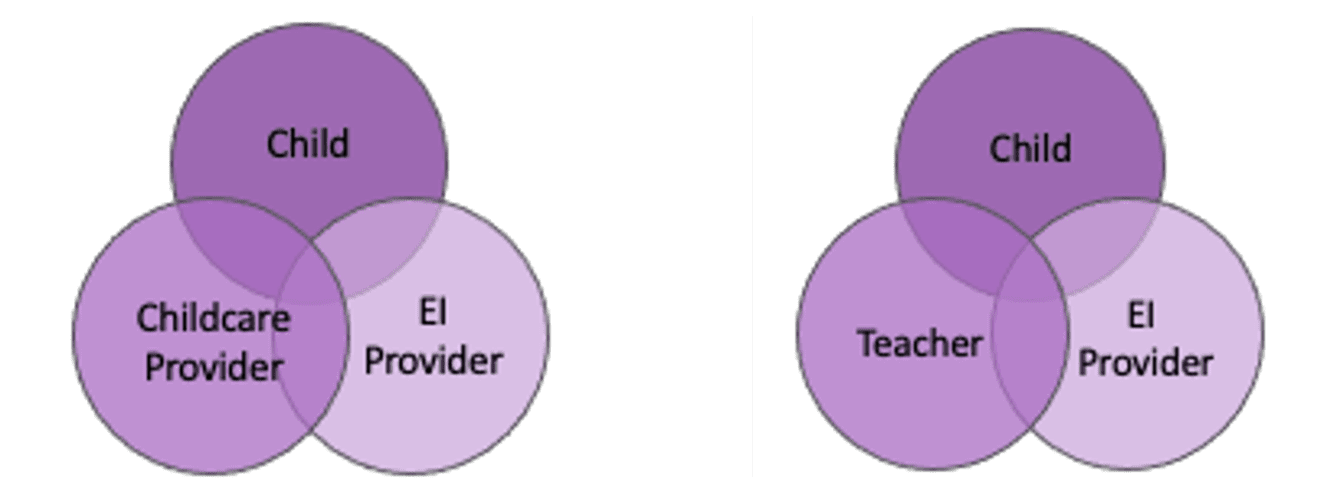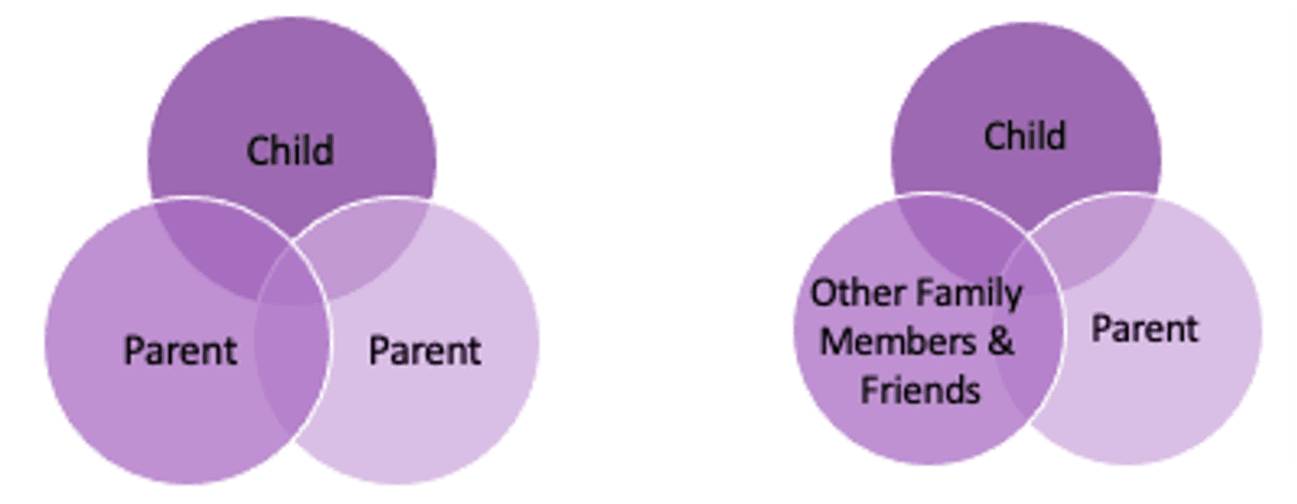By Crystal Williams, Ed.M.
In the recent early intervention (EI) webinar two-part series, Good Things Come in Three’s, Dr. Tweety Yates defined triadic strategies and how early childhood professionals can use them to share developmental information in a meaningful way with families of young children. Triadic strategies promote positive interactions between three individuals—a triad—which is usually composed of a child, parent, and an early childhood professional. In the post by Dr. Yates, she noted that there are many possibilities of who can be involved in a triad.
It is important to remember that many young children spend a substantial amount of time with a variety of adults. These individuals may include childcare providers, teachers, EI providers, therapists, grandparents, and other family members. Adults who spend significant amounts of time with a child can be a member of the triad and use triadic strategies with the child and other adults. This blog post provides an overview of the triadic strategies and highlights three different types of triads, the contributions each adult offers in the triad, and tips for strengthening triadic relationships.
Overview of the Triadic Strategies
| Triadic Strategy | Definition |
| Establish dyadic context | Arrange the environment to promote enjoyable adult-child interactions |
| Affirm caregiver competence | Recognize and expand on one another’s knowledge and actions that support the child |
| Focus attention | Draw one another’s attention to what the child is learning |
| Provide developmental information | Talk about child development (e.g., communication, emotions, social skills, cognition, and motor skills) during play and interactions |
| Model | Engage with the child for brief periods of time to model an interaction |
| Suggest | Give one another ideas to try with the child |
For examples of the triadic strategies, check out this resource.
Triad 1: Parent-Professional-Child
In this type of triad, an early childhood professional acts as a facilitator and coaches the parent on ways to interact with their child. As the relationship with the family builds, professionals should consider what they can learn from parents.

| Professional’s Contributions | Parent’s Contributions |
|
|
Tips for strengthening the triadic relationship:
- Highlight parents’ strengths by affirming their competence.
- Encourage children to seek interaction from their parent (i.e., “Take the ball to dad”)
- Ask parents for input into what they want their child to work on instead of telling them.
- Ask parents about their concerns, goals, and preferences frequently and make adjustments to plans and sessions accordingly.
- Collaborate with families to determine how often they want to communicate and how. Consider using an app or email for communication instead of calls and emails, if preferred by the parents.
Triad 2: Professional-Professional-Child
In this type of triad, the EI provider usually comes into the classroom to interact with the child and shares information with the teacher or childcare provider.

| EI Provider’s Contributions | Childcare Provider’s/Teacher’s Contributions |
|
|
Tips for strengthening the triadic relationship:
- Ensure that intervention services are embedded in the child’s routines as much as possible.
- Instead of working one-on-one with the child in the classroom, encourage teachers to join the intervention. Give opportunities for them to practice strategies with the focus child.
- Problem-solve and practice ways the teacher can manage classroom responsibilities while supporting the child’s needs.
- Rely on one another’s knowledge and experience to support the child.
- Make time for collaboration, sharing strategies, knowledge, and expertise, and ensuring time for reflection (even if it’s only a few minutes at a time).
- Consider alternative ways to communicate about the child such as texting, sharing a communication notebook, or using an app.
- Share resources with one another.
Triad 3: Parent-Family Member-Child
In this type of triad, one parent facilitates interactions with another family member such as a second parent, grandparent, sibling, or aunt/uncle. This type of relationship is important for children to gain frequent, meaningful learning opportunities with important people in their lives. Parents who know how to support their child’s needs can teach others how to do the same through triadic strategies.

| Parent’s Contributions | Family Member’s/Other’s Contributions |
|
|
Tips for strengthening the triadic relationship:
- Encourage families to identify important people in a child’s life such as family members, babysitters, and family friends.
- Talk to families about how they can share intervention strategies and developmental information with others, make a plan for sharing, and then reflect on how it went.
- Roleplay with parents so they gain experience and confidence to facilitate triadic strategies with others.















